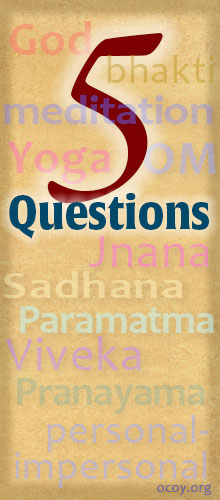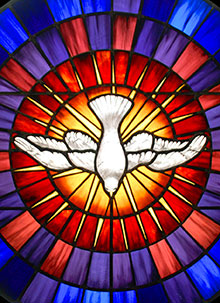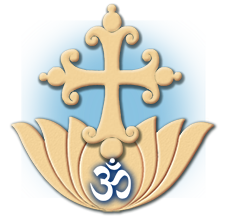1. What is the nature of God: personal, impersonal, both equally, or is one of the two primary?
 God is only personal or impersonal in relation to a consciousness immersed in the duality of samsara. God is beyond the two, just as God is beyond samsara. So those in samsara will consider God either personal or impersonal, and being samsarins will no doubt wrangle with or disdain one another for holding a wrong view. Those who have gone beyond duality will be beyond personal/impersonal, and will keep silence–just as does Brahman.
God is only personal or impersonal in relation to a consciousness immersed in the duality of samsara. God is beyond the two, just as God is beyond samsara. So those in samsara will consider God either personal or impersonal, and being samsarins will no doubt wrangle with or disdain one another for holding a wrong view. Those who have gone beyond duality will be beyond personal/impersonal, and will keep silence–just as does Brahman.
2. What is the nature of spiritual practice/sadhana/yoga?
The only purpose of yoga sadhana is to realize the Self, both the individual and cosmic, the jivatman and the Paramatman. Therefore it must be exclusively adhyatmic in nature. A Brief Sanskrit Glossary defines adhyatmic: “pertaining to the Self (Atma), individual and Supreme.” A practice centered on an external “god” such as Shiva, Durga, Ganesha, etc., which is really only a symbol or portrayal of one or more aspects of God, or on an avatar such as Rama and Krishna, is by its and their nature partial and therefore limited and cannot lead to Self-realization and liberation in the Infinite. Gods and avatars only exist for us in samsara. Parabrahman, the Supreme, is beyond samsara and cannot be revealed through concentration or worship on either gods or avatars. To realize God we must get beyond all that which God is beyond.
3. Is meditation on OM and pranayama sufficient?
Since sadhana must be adhyatmic, the meditation and japa of Om, which involves observation of the breath (which is the highest pranayama), is both sufficient and essential. Patanjali says very clearly: “Its japa and meditation is the way” (Yoga Sutras 1:28).









 Q
Q The pinnacle of the church in India was Saint Gregorios of Parumala, whose shrine is visited by thousand of Christians, Hindus and Moslems every day. His miracles are continuous. And Saint Gregorios was committed to the restoration of Dharma to the Saint Thomas Christian community.
The pinnacle of the church in India was Saint Gregorios of Parumala, whose shrine is visited by thousand of Christians, Hindus and Moslems every day. His miracles are continuous. And Saint Gregorios was committed to the restoration of Dharma to the Saint Thomas Christian community. Q:
Q: